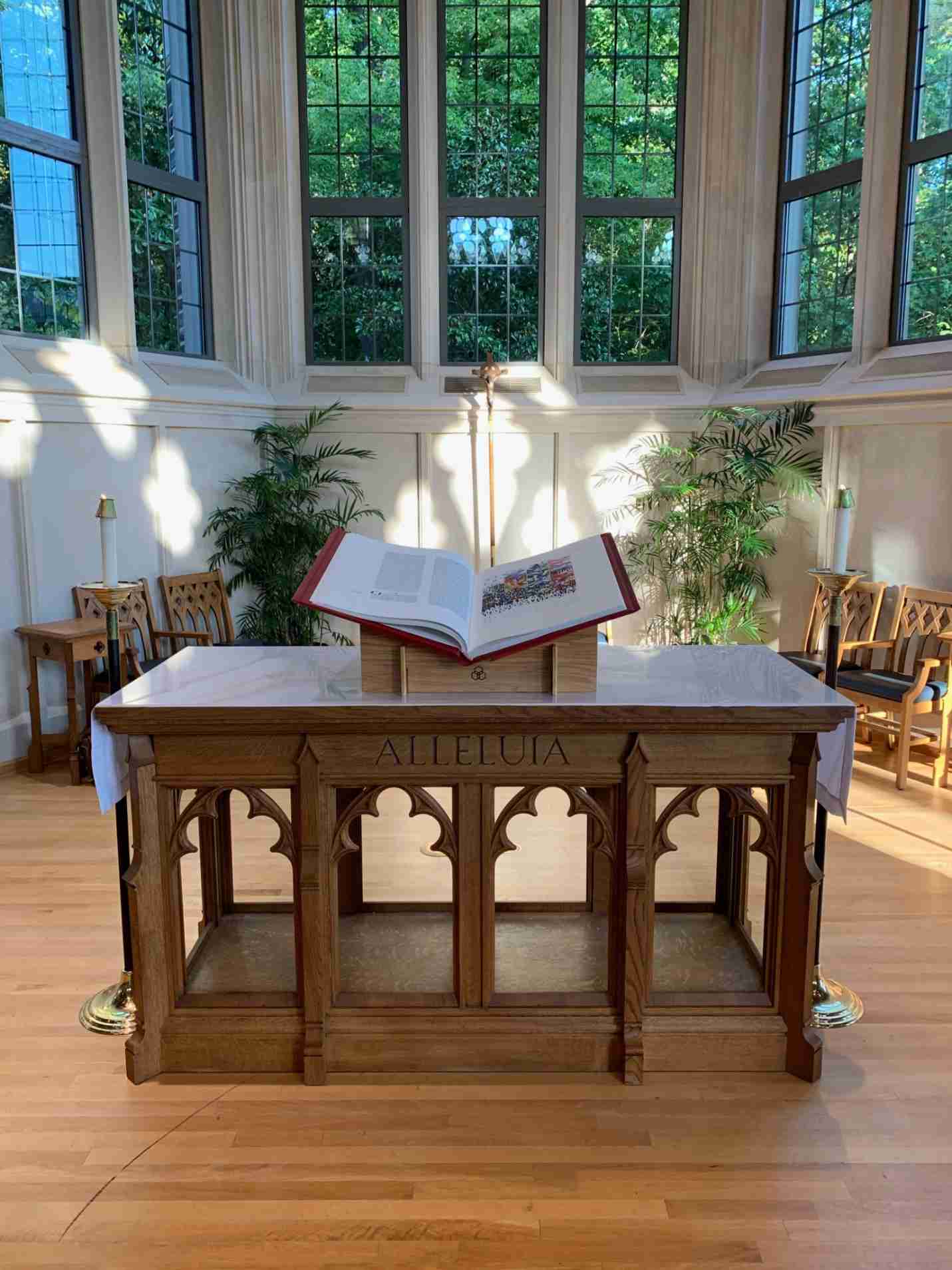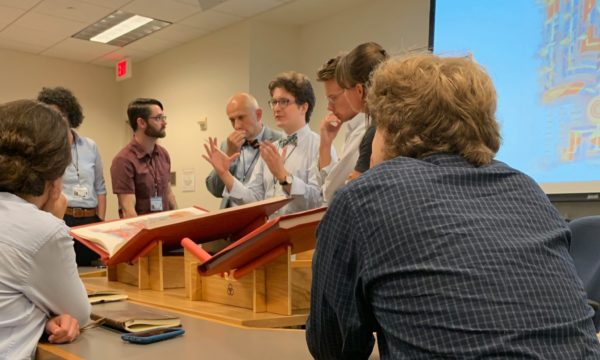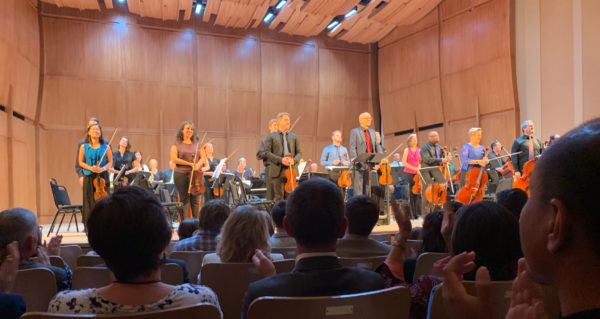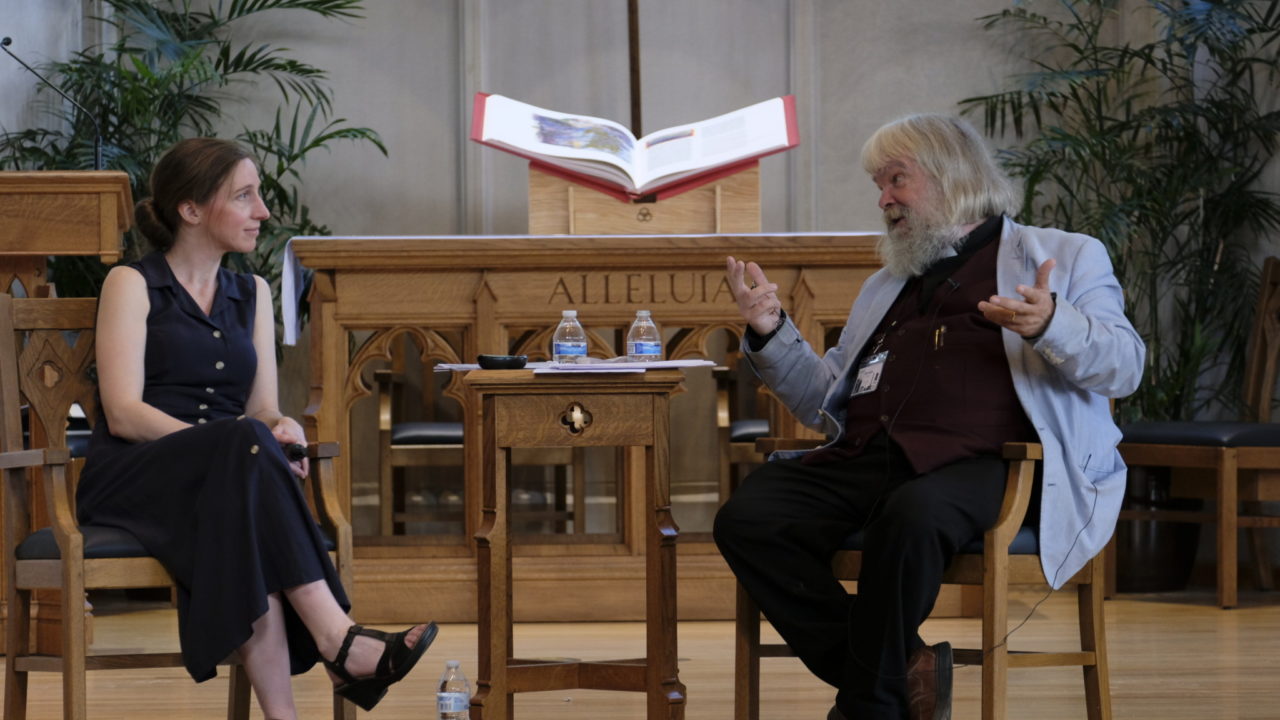With The Saint John’s Bible, Faith and Art are “Inseparable” at Duke University’s DITA10
Displays and presentations match the conference’s mission with that of The Saint John’s Bible project
 The Saint John’s Bible is at home anywhere that spirituality and the arts intersect. Duke Initiatives in Theology and the Arts (DITA), a research and academic program within the Divinity School at Duke University, “promotes and encourages rigorous scholarly work and effective, imaginative teaching,” making it a natural venue at which to kick off Duke’s Year with The Saint John’s Bible.
The Saint John’s Bible is at home anywhere that spirituality and the arts intersect. Duke Initiatives in Theology and the Arts (DITA), a research and academic program within the Divinity School at Duke University, “promotes and encourages rigorous scholarly work and effective, imaginative teaching,” making it a natural venue at which to kick off Duke’s Year with The Saint John’s Bible.
Founded in 2009 by musician and Distinguished Professor of Theology Dr. Jeremy Begbie to bring theologians and church leaders into conversation with artists (including visual artists, poets, musicians and dancers), DITA seeks to promote a vibrant, mutually-beneficial interplay between the arts and theology—theology for the arts, and the arts for theology.
“We’re trying to ignite a movement,” Begbie says. “We want to form leaders of the future who will see faith and art as intertwined. Inseparable.”
The connecting theme of a conference in celebration of DITA’s 10-year anniversary, “Creation and New Creation: Discerning the Future of Theology & the Arts,” highlighted the ability of art to powerfully convey biblical and theological truth for new audiences. Like many new creations, The Saint John’s Bible program forged a new path for spiritual art with help from the tools and techniques of old.

To complement that vision, The Saint John’s Bible had a presence in three main ways at DITA10: the Gospels & Acts volume was displayed in Goodson Chapel, “the center for worship life at Duke Divinity School,” during each morning worship service; six illuminations were displayed prominently throughout the conference’s three-day schedule; and a presentation from Jonathan Homrighausen, Duke Ph.D. candidate and author of Illuminating Justice: The Ethical Imagination of The Saint John’s Bible.
“My workshop introduced participants to The Saint John’s Bible and my own take on it,” Homrighausen said. “The goal was to get them to see some of the ‘greatest hits’ illuminations in the two Heritage Edition volumes we have this year, as well as to understand how The Saint John’s Bible employs rich symbolism, how it reflects concerns for social justice and the context of our contemporary world, and how they can make it their own source of reflection.
“Having the Heritage Edition on campus has already started conversations and built community, as this Bible seems to do everywhere it goes,” Homrighausen added. “Illuminated manuscripts are not an art form we often think of as being in our own time; having The Saint John’s Bible here will also open conversations about the history of manuscripts, both as technology and art form, in both Christian and Jewish history.”

“We were delighted to have The Saint John’s Bible present in so many forms throughout the DITA10 Symposium,” said Dr. Daniel Train, Associate Director of DITA and principle organizer of the conference. “In both subtle and explicit ways, The Saint John’s Bible embodied and represented DITA’s biblically-centered approach to fostering a theologically-rigorous engagement with the Arts. In its own way, The Saint John’s Bible made visible the Word made Flesh which is the very center of our work at DITA for the last ten years. We’re thrilled for the opportunity to have that message echoed again and again over the course of the coming year through the Heritage Edition program.”
DITA10 resonated with the mission of The Saint John’s Bible, allowing a modern work of timeless tradition to reach new audiences at the point where theology and the arts intersect – creating deeper understandings of faith, spirituality and artistic expression. If you’d like to learn about bringing The Saint John’s Bible to your community, contact sjbheritage@csbsju.edu.


